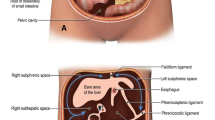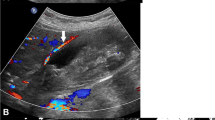Abstract
Gall stones are one of the major causes of morbidity and mortality all over the world and common health problems throughout in developing countries. Cholecystectomy is one of the most common surgical practices and postoperative analysis of cholecystectomy specimen has a great value since histopathological reports may document some entities with significant clinical significances. Gallbladder carcinomas in cholecystectomy specimens are received in our histopathology laboratory to analyse their clinicopathological features. This was a descriptive study carried out at the histopathology section of the Department of Pathology at our hospital over a period of two years ranging from November 2016 to October 2018. Both intraoperative and postoperative histological examinations of the excised gallbladder facilitated the diagnosis of gallbladder cancer. Surgery-related variables and surgical approaches were evaluated according to the extent of tumor invasion. Twenty five cholecystectomy specimens of the acute and symptomatic chronic cholecystitis patients were analyzed. Standardization of the reporting were examined. Age, gender, presence of gall stone, cholesterolosis, adenomatous hyperplasia, gastric or intestinal metaplasia, dysplasia, histopathological type of gallbladder carcinoma, cellular differentiation, grading, lympho vascular invision, perineural invasion, lymph node invasion, involvement of cystic duct end margin, liver invasion, omental tissue invasion and T.N.M. staging were investigated. Reported rates of histopathological findings were comparable between patients aged twenty six years to seventy six years. Epithelial hyperplasia and metaplasia were found to be related to age. The correlation between cholesterolosis and gender or metaplasia was noted. We suggest that in India and other nations, high incidences of gallbladder carcinoma, all cholecystectomy specimens must be submitted to routine macroscopic and histopathology examination in the laboratory, as this is the only capability through which malignancies can be detected at an early, potentially curable stage. This incidental finding has altered the management and outcome of this dreadful disease.








Similar content being viewed by others
References
Inui K, Yoshino J, Miyoshi H. Diagnosis of gallbladder tumors. Intern Med. 2011;50:1133–6.
Nervi F, Duarte I, Gómez G, Rodríguez G, Pino GD, Ferrerio O, et al. Frequency of gallbladder cancer in Chile, a high-risk area. Int J Cancer. 1988;41:657–60.
Hundal R, Shaffer EA. Gallbladder cancer: epidemiology and outcome. Clin Epidemiol. 2014;6:99–109.
Yamashita Y, Takada T, Strasberg SM, Pitt HA, Gouma DJ, Garden OJ, et al. Tokyo guideline revision committee, TG13 surgical management of acute cholecystitis. J Hepatobiliary Pancreat Sci. 2013;20:89–96.
Rakic M, Patrlj L, Kopljar M, et al. Gallbladder cancer. Hepatobiliary Surg Nutr. 2014;3:221–6.
Ogura T, Kurisu Y, Masuda D, Imoto A, Onda S, Kamiyama R, et al. Can endoscopic ultrasound-guided fine needle aspiration offer clinical benefit for thick-walled gallbladders? Dig Dis Sci. 2014;59:1917–24.
Yi X, Long X, Zai H, Xiao D, Li W, Li Y. Unsuspected gallbladder carcinoma discovered during or after cholecystectomy: focus on appropriate radical resection according to the T-stage. Clin Transl Oncol. 2013;15:652–8.
Lee NK, Kim S, Kim TU, et al. Diffusion-weighted MRI for differentiation of benign from malignant lesions in the gallbladder. Clin Radiol. 2014;69:78–85.
Wright GP, Siripong A, Winton MD, Mitchell EJ, Goslin BJ, Chung MH. Selective laparoscopic approach in suspected gallbladder malignancy. JSLS. 2013;17:596–601.
Cwik G, Skoczylas T, Wyroslak-Najs J, et al. The value of percutaneous ultrasound in predicting conversion from laparoscopic to open cholecystectomy due to acute cholecystitis. Surg Endosc. 2013;27:2561–8.
Mitchell CH, Johnson PT, Fishman EK, Hruban RH, Raman SP. Features suggestive of gallbladder malignancy: analysis of T1, T2, and T3 tumors on cross-sectional imaging. J Comput Assist Tomogr. 2014;38:235–41.
Shukla VK, Chauhan VS, Mishra RN, et al. Lifestyle, reproductive factors and risk of gallbladder cancer. Singapore Med J. 2008;49:912–5.
Serra I, Yamamoto M, Calvo A, Cavada G, Báez S, Endoh K, et al. Association of chili pepper consumption, low socioeconomic status and longstanding gallstones with gallbladder cancer in Chilean population. Int J Cancer. 2002;102:407–11.
Andren-Sandberg A. Diagnosis and management of gallbladder cancer. N Am J Med Sci. 2012;4:293–9.
Tyagi BB, Manoharan N, Raina V. Risk factors for gallbladder cancer: a population based case-control study in Delhi. Ind J Med Paed Onco. 2008;29:16–26.
Kapoor VK, Mc Michael AJ. Gallbladder cancer: an ‘Indian’ disease. Nat Med J Ind. 2003;16:209–13.
Bartosiak K, Liszka M, Drazba T, Paśnik K, Janik MR. Unexpected pathological findings after laparoscopic cholecystectomy-analysis of 1131 cases. Wideochir Inne Tech Maloinwazyjne. 2018;13:62–6.
Hamdani NH, Qadri SK, Aggarwalla R, Bhartia VK, Chaudhuri S, Debakshi S, et al. Clinicopathological study of gallbladder carcinoma with special reference to gallstones: our 8-year experience from eastern India. Asian Pac J Cancer Prev. 2012;13:5613–7.
Mittal R, Jesudason MR, Nayak S. Selective histopathology in cholecystectomy for gallstone disease. Indian J Gastroenterol. 2010;29:32–6.
Tatli F, Ozgonul A, Yucel Y, et al. Incidental gallbladder cancer at cholecystectomy. Ann Ital Chir. 2017;6:399–402.
Stancu M, Caruntu ID, Giusca S, et al. Hyperplasia, metaplasia, dysplasia and neoplasia lesions in chronic cholecystitis - a morphologic study. Rom J Morphol Embryo. 2007;48:335–42.
Shrestha R, Tiwari M, Ranabhat SK, Aryal G, Rauniyar SK, Shrestha HG. Incidental gallbladder carcinoma: value of routine histological examination of cholecystectomy specimens. Nepal Med Coll J. 2010;12:90–4.
Koppatz H, Nordin A, Scheinin T, Sallinen V. The risk of incidental gallbladder cancer is negligible in macroscopically normal cholecystectomy specimens. HPB (Oxford). 2018;20:456–46.
Talreja V, Ali A, Khawaja R, et al. Surgically resected gall bladder: is histopathology needed for all? Surg Res Pract. 2016;93:1–4.
Wrenn SM, Callas PW, Abu-Jaish W. Histopathological examination of specimen following cholecystectomy: are we accepting resect and discard? Surg Endosc. 2017;31:586–93.
Amin MB, Greene FL, Edge SB, et al. The eighth edition AJCC cancer staging manual: continuing to build a bridge from a population-based to a more “personalized” approach to cancer staging. CA Cancer J Clin. 2017;67:93–9.
Sharma JD, Kalita I, Das T, Goswami P, Krishnatreya M. A retrospective study of post-operative gall bladder pathology with special reference to incidental carcinoma of the gall bladder. Int J Res Med Sci. 2014;2:1050–3.
Baidya R, Sigdel B, Baidya NL. Histopathological changes in gallbladder mucosa associated with cholelithiasis. J Pathol Nepal. 2012;2:224–5.
Yuan HX, Cao JY, Kong WT, Xia HS, Wang X, Wang WP. Contrastenhanced ultrasound in diagnosis of gallbladder adenoma. Hepatobiliary Pancreat Dis Int. 2015;14:201–17.
Matos AS, Baptista HN, Pinheiro C, et al. Gallbladder polyps: how should they be treated and when? Rev Assoc Med Bras. 2010;56:318–21.
Wakai T, Shirai Y, Yokoyama N, Nagakura S, Watanabe H, Hatakeyama K. Early gallbladder carcinoma does not warrant radical resection. Br J Surg. 2001;88:675–8.
Ahn Y, Park CS, Hwang S, Jang HJ, Choi KM, Lee SG. Incidental gallbladder cancer after routine cholecystectomy: when should we suspect it preoperatively and what are predictors of patient survival? Ann Surg Treat Res. 2016;90:131–8.
Meirelles-Costa AL, Bresciani CJ, et al. Are histological alterations observed in the gallbladder precancerous lesions? Clinics (Sao Paulo). 2010;65:143–50.
Agarwal AK, Kalayarasan R, Singh S, Javed A, Sakhuja P. All cholecystectomy specimens must be sent for histopathology to detect in apparent gallbladder cancer. HPB (Oxford). 2012;14:269–73.
Wistuba II, Gazdar AF. Gallbladder cancer: lessons from a rare tumour. Nat Rev Cancer. 2004;4:695–706.
Stinton LM, Shaffer EA. Epidemiology of gallbladder disease: cholelithiasis and cancer. Gut Liver. 2012;6:172–87.
Everhart JE, Khare M, Hill M, Maurer KR. Prevalence and ethnic differences in gallbladder disease in the United States. Gastroenterol. 1999;117:632–9.
Lohsiriwat V, Vongjirad A, Lohsiriwat D. Value of routine histopathologic examination of three common surgical specimens: appendix, gallbladder, and hemorrhoid. World J Surg. 2009;33:2189–93.
Darmas B, Mahmud S, Abbas A, Baker AL. Is there any justification for the routine histological examination of straightforward cholecystectomy specimens? Ann R Coll Surg Engl. 2007;89:238–41.
Bazoua G, Hamza N, Lazim T. Do we need histology for a normal looking gallbladder? J Hepato-Biliary-Pancreat Surg. 2007;14:564–8.
Oommen CM, Prakash A, Cooper JC. Routine histology of cholecystectomy specimens is unnecessary. Ann R Coll Surg Engl. 2007;89:738.
Dix FP, Bruce IA, Krypcyzk A, Ravi S. A selective approach to histopathology of the gallbladder is justifiable. Surgeon. 2003;1:233–5.
Roa I, Ibacache G, Roa J, Araya J, de Aretxabala X, Muñoz S. Gallstones and gallbladder cancervolume and weight of gallstones are associated with gallbladder cancer; a case-control study. J Surg Oncol. 2006;93:624–8.
Shrestha R, Tiwari M, Ranabhat SK, et al. Incidental gallbladder carcinoma: value of routine histological examination of cholecystectomy specimens. Nepal Med Coll J. 2010;12:90–104.
Abdel OR, Elsayed Z, Elhalawani H. Gemcitabine-based chemotherapy for advanced biliary tract carcinomas. Cochrane Database Syst Rev. 2018;6:4.
Shukla SK, Singh G, Shahi KS, Bhuvan, Pant P. Staging, treatment and future approaches of gallbladder carcinoma. J Gastrointest Cancer. 2018;49:9–15.
Acknowledgments
I am appreciative to surgery department faculty and supporting staff for given patient’s information and gallbladder samples. I recognize to pathology department for histopathological finding and data assemble of gallbladder samples and i am also thankful to Principal, Government Medical College, Haldwani, Nainital, Uttarakhand.
Author information
Authors and Affiliations
Contributions
Sanjeev Kumar Shukla, clinical data collection and interpretation, as well as all aspects of the development and writing of the article. Prabhat Pant wrote the planning of the study protocol, acted as the primary lead in the conception, pathological analysis and approved the final version of the manuscript. Govind Singh: design and implementation of the project, provided clinical guidance and feedback for this study. Bhuvan and K.S. Shahi provided the positive samples of the gallbladder carcinoma.
Corresponding author
Ethics declarations
Conflict of Interest
The authors declare that they have no conflict of interest.
Additional information
Publisher’s Note
Springer Nature remains neutral with regard to jurisdictional claims in published maps and institutional affiliations.
Rights and permissions
About this article
Cite this article
Shukla, S.K., Pant, P., Singh, G. et al. Histopathological Examination of Gallbladder Specimens in Kumaon Region of Uttarakhand. J Gastrointest Canc 51, 121–129 (2020). https://doi.org/10.1007/s12029-018-00188-4
Published:
Issue Date:
DOI: https://doi.org/10.1007/s12029-018-00188-4




